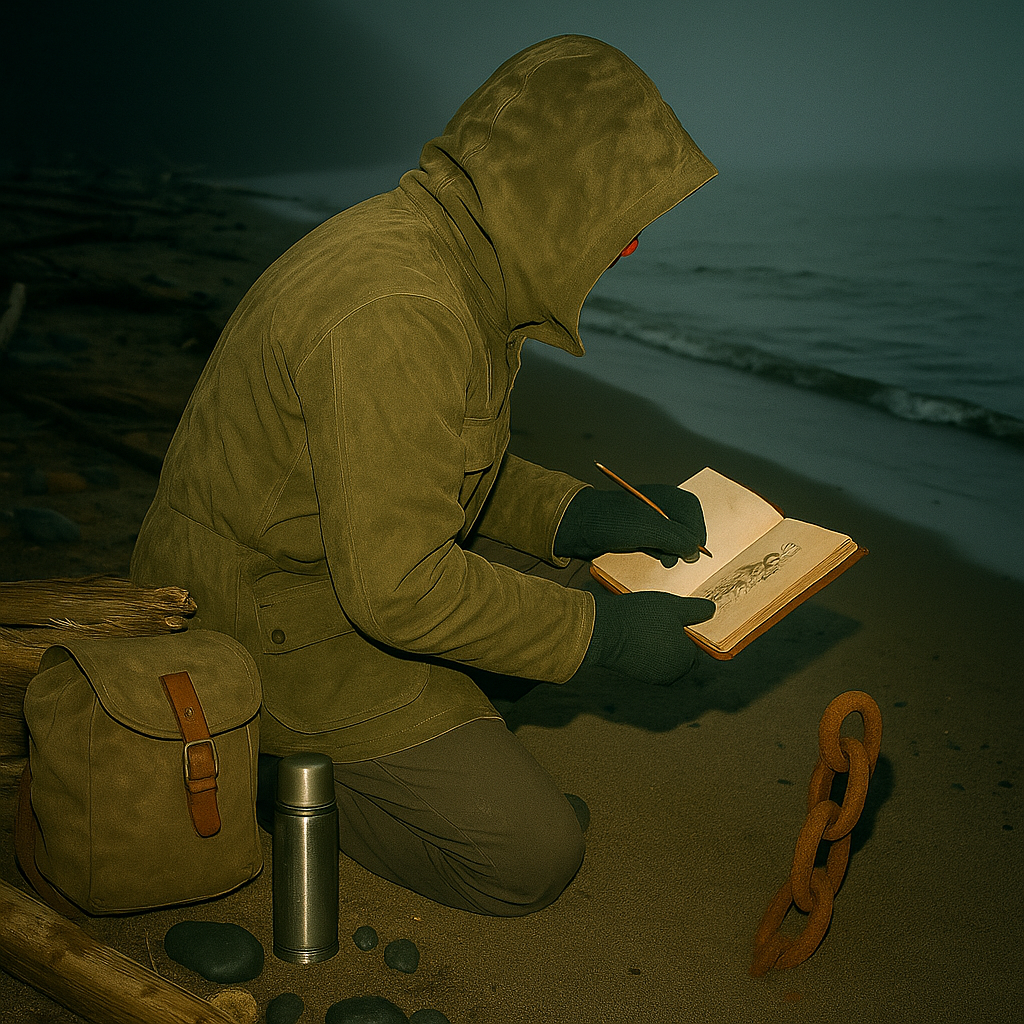Field Note: Strand Chain, Partial Exposure
Filed by: Alistar Corvus, Seated Warden of the Ledger
Location: Southern Approach, Point Beach – Ledger Grid 7.2c
Date: Entry 146 – Early Vernal Session, Fog Phase
At precisely 07:14 this morning, under a mute veil of fog and with frost still stitched along the dune grass, a brief but notable encounter occurred during a solitary shoreline traverse at Point Beach. The purpose of the outing was initially interpretive: a simple comparative survey of erosion lines following last week’s wind event. However, nature—ever indifferent to declared intent—had its own designs.
While approaching a familiar hollow near a washed-out beech root cluster, my boot struck what I assumed was a tangle of drift. Upon closer examination, the disturbance revealed not branch or kelp, but a heavily oxidized iron chain—approximately 14 inches exposed, with a curve suggesting greater length buried beneath the sand strata. Three links were fully visible, one fused with a sandstone-like mineral crust. Initial assessment suggests considerable age. Unanchored.
I recorded the find in the field ledger, marking a cross-reference to Ledger Fragment IX.2 (“...fastenings of uncertain origin, consistent with pre-survey anchorage but absent of context...”), and began preliminary sketch documentation. The chain’s position—angled shoreward and subtly curved—invites several speculative interpretations. I offer none at this stage, save to note its alignment with the previously surveyed submerged timbers west of Rawley Point (Session 311).
Its discovery bears resemblance, at least spiritually, to the late Concordant Emrick’s 1961 encounter near Holland (cf. Ledger Note “Hollow Ring – Third Exposure”), though no audible resonance was observed in this instance. Still, I remained kneeling longer than necessary, notebook open, until a singular gull circled low enough to suggest I was overstaying some unspoken boundary.
I have flagged the location using the standard wax marker protocol and will return after the next precipitation cycle, when the water table may loosen surrounding sand.
Further investigation—quietly and without declaration—is encouraged.
Postscript:
Members encountering similar finds are reminded to avoid assumptions of maritime origin without corroborative joinery or residue analysis. As always: record first, speculate later, and never extract alone.
